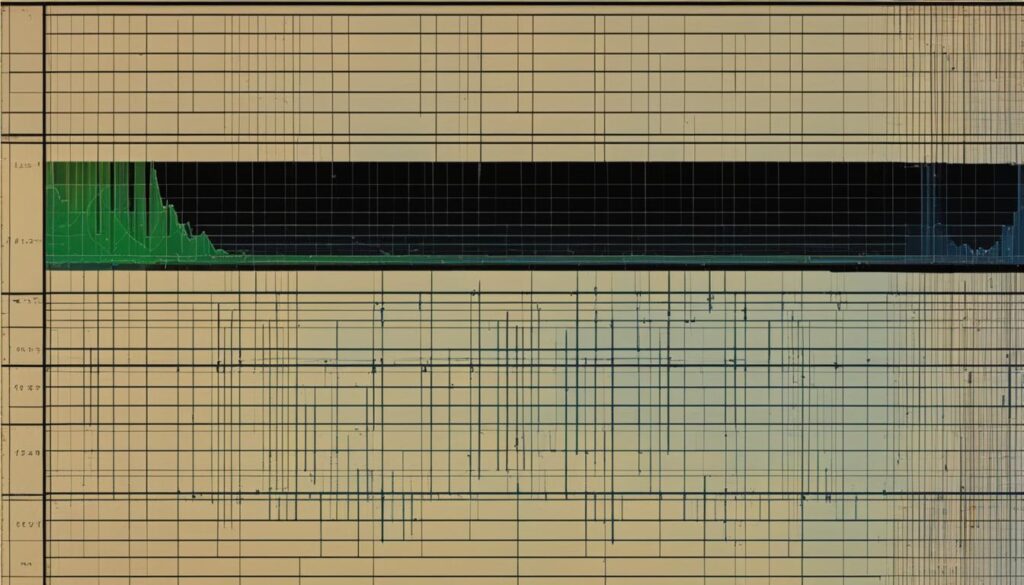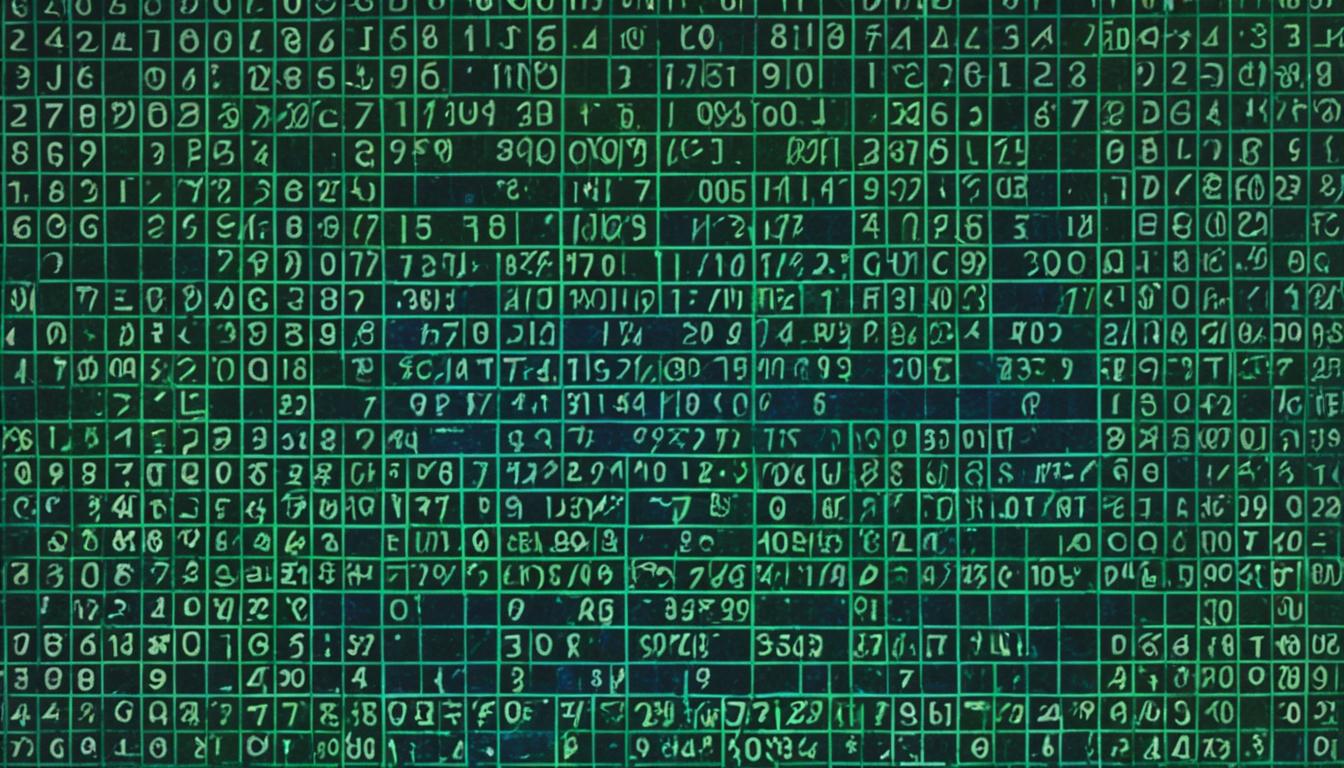Extended Binary Coded Decimal Interchange Code (EBCDIC) is an eight-bit encoding scheme used in computer operating systems and applications. Developed by IBM in 1963, EBCDIC standardized the interpretation of alphanumeric characters, punctuation, and symbols. Unlike ASCII, EBCDIC has its own set of code pages that define specific character sets to meet various requirements.
Contents
Key Takeaways:
- EBCDIC is an eight-bit encoding scheme primarily used in IBM mainframes and midrange computers
- EBCDIC plays a crucial role in data conversion between different encoding schemes, such as ASCII and Unicode
- EBCDIC characters are represented by 8-bit binary values and have their own unique code pages
- Converting data between EBCDIC and ASCII encoding schemes requires specialized software or services
- Understanding the differences between EBCDIC and other encoding schemes is essential for seamless data exchange and compatibility
The Role of EBCDIC Encoding in Data Conversion
EBCDIC encoding plays a crucial role in data conversion between different encoding schemes. One common comparison is between EBCDIC and ASCII. While ASCII has become more widely accepted, EBCDIC is still widely used in IBM mainframes.
Converting data from EBCDIC to ASCII or Unicode is often necessary when working with systems that use different encoding schemes and need to exchange data. This conversion process can be achieved using specialized software or services that are designed to handle the complexities of EBCDIC to ASCII conversion.
When converting EBCDIC to ASCII, the specialized software or service interprets the EBCDIC code and translates it into the corresponding ASCII characters. This conversion ensures that the data can be seamlessly processed and understood by systems that utilize the ASCII encoding scheme.
In addition to EBCDIC to ASCII conversion, there is also the option to convert EBCDIC to Unicode. Unicode is a universal character encoding standard that supports a vast range of characters from various writing systems. Converting EBCDIC to Unicode allows for broader compatibility and ensures that the data can be properly rendered and interpreted across different platforms and applications.
Overall, the role of EBCDIC encoding in data conversion is essential for facilitating data exchange between systems that utilize different encoding schemes. By leveraging specialized software or services, organizations can ensure seamless data migration and communication across platforms, regardless of the underlying encoding standard.
Understanding EBCDIC Characters and Code Pages
When working with EBCDIC encoding, it is important to understand the unique characteristics of EBCDIC characters and the role of code pages in defining specific character sets. EBCDIC characters are represented by 8-bit binary values, providing a range of character options for different requirements.
The EBCDIC code pages play a significant role in mapping characters to their respective values. Each character in the EBCDIC code page has a binary, decimal, and hexadecimal equivalent, allowing for easy representation and conversion. However, it’s important to note that EBCDIC code pages are not compatible with other types of code pages, such as ASCII or Unicode.
Let’s take a look at an example of an EBCDIC code page. The CCSID 37 code page, used in the United States and Canada, defines the character set for this specific region. Here is a table showcasing some commonly used EBCDIC characters and their corresponding values:
| Character | Binary | Decimal | Hexadecimal |
|---|---|---|---|
| A | 11000001 | 193 | C1 |
| B | 11000010 | 194 | C2 |
| C | 11000011 | 195 | C3 |
As you can see, each character in the EBCDIC code page has a unique binary, decimal, and hexadecimal representation. The code pages ensure consistency and accuracy in interpreting and displaying EBCDIC characters. Understanding these code pages is essential for working with EBCDIC-encoded data and ensuring compatibility within the IBM mainframe and midrange computing systems.
Now that you have a better understanding of EBCDIC characters and code pages, you can effectively navigate the intricacies of data handling and conversion within EBCDIC-encoded environments.
Converting Between EBCDIC and ASCII
When you’re working with systems that use different encoding standards, it’s essential to be able to convert data between EBCDIC and ASCII. Fortunately, there are specialized conversion software and services available to help you with this process.
One option for converting between EBCDIC and ASCII is vEdit’s conversion software. vEdit offers a user-friendly interface that allows you to easily convert your data from one encoding scheme to another. With vEdit, you can ensure seamless data exchange between systems using different encoding standards.
Another solution for EBCDIC to ASCII conversion is Microsoft’s Azure Logic App. Azure Logic App provides a comprehensive platform for integrating systems and data transformation. With its built-in capabilities, you can convert EBCDIC data to ASCII effortlessly, enabling smooth communication between systems.

Additionally, if you’re using the Z/OS UNIX operating system, you’ll benefit from its automatic data conversion capabilities. Z/OS UNIX can handle the conversion of data from ASCII to EBCDIC seamlessly, making it easier for systems using different encoding schemes to communicate effectively.
Converting between EBCDIC and ASCII is crucial for ensuring compatibility and smooth data exchange between systems. Whether you choose specialized conversion software, utilize Azure Logic App, or rely on Z/OS UNIX, these conversion capabilities are essential for maintaining the integrity of your data and enabling efficient communication.
| Conversion Options | Description |
|---|---|
| vEdit Conversion Software | A user-friendly software for converting data between EBCDIC and ASCII encoding schemes. |
| Azure Logic App | A platform that provides services for converting EBCDIC data to ASCII, facilitating seamless communication between systems. |
| Z/OS UNIX | An operating system with built-in automatic conversion capabilities, allowing for smooth data exchange between ASCII and EBCDIC. |
EBCDIC vs Other Encoding Schemes
EBCDIC is one of the many encoding schemes used in computer systems. While ASCII has gained wider acceptance, EBCDIC still continues to be utilized in IBM mainframe and midrange computers. Other encoding schemes, such as Unicode, also have their own sets of code pages.
The primary difference between EBCDIC and ASCII lies in their underlying character mappings and code page definitions. Each encoding scheme has its own unique way of representing characters and interpreting data. Understanding the specific encoding scheme used in a system is crucial for ensuring proper data handling and compatibility with other systems.
When comparing EBCDIC and ASCII, it is important to note that they are not directly compatible with each other. Converting data between these encoding schemes requires specialized software or services to ensure accurate and seamless data exchange.
The Differences Between EBCDIC and ASCII:
- EBCDIC is primarily used in IBM mainframes and midrange computers, while ASCII is more widely adopted across different platforms.
- EBCDIC and ASCII have different character mappings and code page definitions, resulting in variations when interpreting data.
- EBCDIC has its own unique set of code pages, while ASCII uses a standard set of characters.
EBCDIC and ASCII have their respective strengths and applications. While EBCDIC remains prevalent in IBM environments, ASCII has become the de facto standard for most modern systems.
In conclusion, understanding the differences between EBCDIC and other encoding schemes, such as ASCII, is vital for effective data handling and compatibility within information technology environments. By recognizing the unique characteristics and code page definitions of each encoding scheme, you can ensure seamless data exchange between systems and optimize your data management processes.

Conclusion
In conclusion, EBCDIC is an essential component of information technology, specifically in computer systems like IBM mainframes and midrange computers. As an eight-bit encoding scheme, EBCDIC enables the interpretation of alphanumeric characters, punctuation, and symbols in a standardized manner. Its primary purpose is to facilitate seamless data conversion between various encoding schemes, such as ASCII and Unicode.
To effectively utilize EBCDIC, it is crucial to understand its characters and code pages. EBCDIC characters are represented by unique 8-bit binary values, and code pages define the specific character sets for different requirements. It’s important to note that EBCDIC code pages are not compatible with other types of code pages, emphasizing the need for accurate handling and interpretation of data.
Comparatively, EBCDIC stands alongside other encoding schemes like ASCII and Unicode. While ASCII has gained wider acceptance, EBCDIC retains its prominence in IBM systems. Each encoding scheme has its own character mappings and code page definitions, necessitating awareness and compatibility considerations when working with different systems.
By recognizing the significance of EBCDIC in information technology, including its encoding capabilities, character sets, and differences from other schemes, professionals can ensure seamless data exchange and compatibility across diverse systems. Mastery of EBCDIC serves as a vital tool for successful data management and communication in the ever-evolving field of information technology.
FAQ
What is EBCDIC in information technology?
EBCDIC (Extended Binary Coded Decimal Interchange Code) is an eight-bit encoding scheme used in computer operating systems and applications. It was developed by IBM in 1963 to standardize how alphanumeric characters, punctuation, and symbols are interpreted.
What is the role of EBCDIC encoding in data conversion?
EBCDIC encoding plays a crucial role in converting data between different encoding schemes, such as ASCII and Unicode. It allows for seamless data exchange between systems that use different encoding standards.
What are EBCDIC characters and code pages?
EBCDIC characters are represented by 8-bit binary values and have their own set of code pages that define different character sets for specific requirements. Each character in the EBCDIC code page has a binary, decimal, and hexadecimal equivalent, and the code pages also define the mapping of characters to their respective values.
How can I convert data between EBCDIC and ASCII encoding?
Specialized conversion software or services can be used to convert data between EBCDIC and ASCII encoding schemes. For example, vEdit offers conversion software, and Microsoft’s Azure Logic App allows for EBCDIC to ASCII conversion. Additionally, Z/OS UNIX can automatically handle the conversion of data from ASCII to EBCDIC.
How is EBCDIC different from other encoding schemes?
The primary difference between EBCDIC and other encoding schemes, such as ASCII, is their underlying character mappings and code page definitions. EBCDIC is primarily used in IBM mainframes and midrange computers, while ASCII has become more widely accepted. Other encoding schemes, such as Unicode, also have their own sets of code pages.




